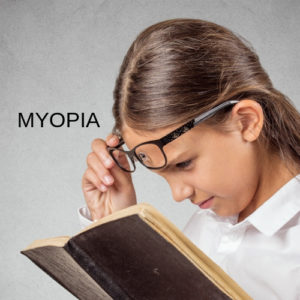Myopia | What to Worry About


About 4% of those have high myopia which requires a corrective lens greater than -6.0 diopters and having high myopia puts them at a greater risk of developing vision threatening eye health complications.
Several studies have shown that having moderate and high myopia increases the risk of cataracts, glaucoma, and retinal detachment.
Diopters and Myopia Severity
A diopter is a measure of the optical power of a curved lens. A window has an optical power of zero diopters. Curving a lens to correct for myopia is done in -0.25 diopter increments.
There are three classifications of myopia severity—mild myopia, moderate myopia, and high myopia and they break down as follows:
- Mild myopia: -0.25 to -3.00 D
- Moderate myopia: -3.25 to -6.00 D
- High myopia: greater than -6.00 D
Symptoms of Myopia in Children
Persistent squinting, the need to sit close to the television, excessive blinking and eye rubbing, and unawareness of objects in the distance are all symptoms of myopia in children.
Myopia can develop rapidly or gradually in which distance vision becomes more blurry year after year.
Progressive Myopia
Progressive myopia usually occurs during childhood and can continue into adulthood. To a degree, it is normal for the eyes to become more myopic as growth occurs up to about age 21. There are diseases associated with progressive myopia.
Preventative Care
There is no cure for progressive myopia but there are some methods of myopia control, such as atropine eye drops, or gas permeable contact lenses worn during sleep, that can be used to slow down the progression.
Being aware of the symptoms of a retinal tear or detachment, such as floaters, light flashes, and seeking the immediate attention of an ophthalmologist can prevent vision loss.
Yearly dilated eye exams are also recommended for those with high myopia so that the eye health of their retina and optic nerve can be monitored and any developing abnormalities can treated as soon as possible.
Children do not commonly complain about vision problems, so it is important for children to get regular eye exams.


